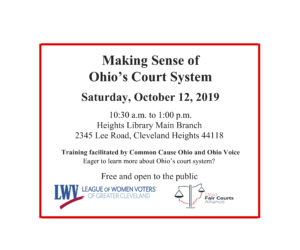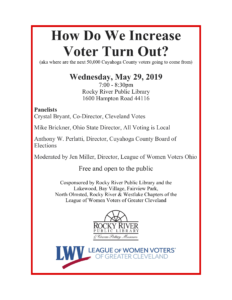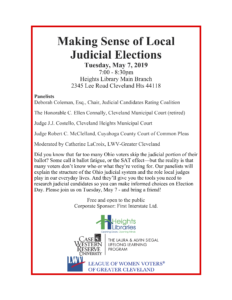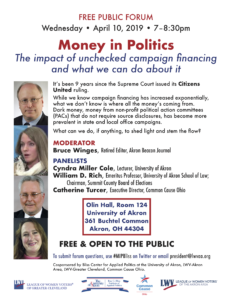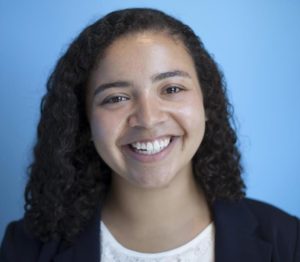Photo: left to right: Michele Pomerantz, Daniel Ortiz, Lisa Neidert, Rich Exner, mod.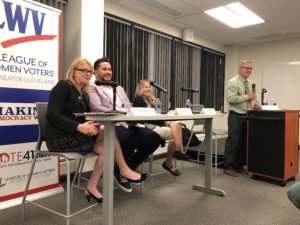 Accurate census vital to Ohio’s future
Accurate census vital to Ohio’s future
By JULIE HULLETT
SEPTEMBER 12, 2019
The pdf is here
The video is here
BEACHWOOD — Local government officials and activists are doing everything they can to get an accurate count for the 2020 census, which will affect redistricting and funding for various programs and projects, according to a panel of experts.
Lisa Neidert of the University of Michigan Institute for Social Research, Daniel Ortiz of Policy Matters Ohio and Michele Pomerantz, director of regional collaboration for Cuyahoga County spoke on the importance of the census and how they are working to count every individual, in addition to brief comments from county Executive Armond Budish. Rich Exner, data analyst editor for cleveland.com, moderated the panel discussion, which drew a crowd of more than 50 people at the Beachwood Landmark Centre on Sept. 12.
“The county has been putting a lot of resources into this effort because it is so important. We need everyone to be counted,” Executive Budish said, who is also co-chairman of the Cuyahoga County Complete Count Committee.
“So many of the things we do depend on a complete census. We provide Medicaid, SNAP, Head Start, foster care and the resources that come through those programs to people who need it depend on the census.”
The event was sponsored by the League of Women Voters of Greater Cleveland, The Siegal Lifelong Learning Center at Case Western Reserve University and cleveland.com.
Self-reporting for 2020 census
Ms. Pomerantz noted an important change for the census. The 2020 census is the first one that will offer the option to self-report online or on the phone. In the past, a U.S. Census Bureau employee, known as an enumerator, came door-to-door to gather information or the census was mailed for residents to fill out and return.
“Self-response is the first and preferred way that we ask of those to respond,” according to Susan Licate, partnership specialist at the Philadelphia Regional Census Center.
She explained the process for reporting census information this year. There are four “touch points.” In early March, households will receive the invitation in the mail to respond to the census online or by phone. One week after the first notification arrives, the household will receive a reminder in the mail. If a household still does not respond, it will receive another reminder. The fourth reminder comes as a paper census page in the mail to fill out. After that, an enumerator will come to the door to gather census information, including name, age, race, sex, relation to the head of the household and whether the person rents or owns the home.
Protecting underreported populations
Mr. Ortiz serves as the chairman of the county subcommittee on Hard to Count Communities, including minorities, homeless people and those living in poverty. He said that although the technical process has improved over time, the U.S. still has a history of undercounting certain populations.
“It’s something that’s always been political. There’s a history of people not being fully counted,” he said of the census, which has occurred every 10 years since 1790.
He noted that black Americans were not fully counted until after slavery, Native Americans were not counted until 1870 and Hispanic and Latinx individuals were counted as Mexican in 1930 and then counted with the term Hispanic in 1970. The census committee is looking at ways to target hard-to-count communities to ensure that they are informed and prepared for the census.
Ms. Pomerantz added that after the census is over for regular households, enumerators will spend several days in communities to count homeless people, whether they are on the street or in a shelter.
Earning trust for the census
Ms. Neidert said that it will prove to be a challenge to gain the trust of individuals filling out the census and convince them that the information is necessary for leaders to efficiently govern. Mr. Exner noted that there will not be a citizenship question on the 2020 census.
“Even when the president decides to create havoc about the citizenship question…[committees] are put together with those individuals who already have the relationship so that this continues to be an outpouring of a message that the census is safe to take,” Ms. Pomerantz said.
The panelists said that the challenges arise in finding every person to count and convincing each one that their information is private and will not be misused. Ms. Neidert also noted that following WWII, census data was used for Japanese internment.
Funding the effort
According to Ms. Pomerantz, Ohio legislators did not appropriate additional funds in the biennial budget for the 2020 census.
“If the state of Ohio was to put extra funding in for the census, even just for promotional materials, it would go a long way,” she said. “But we have not seen that funding and we were pretty surprised about that.”
Ms. Neidert said that the state has been “robbing Peter to pay Paul,” and that the money will not be useful if it comes too late. According to Ms. Pomerantz, the county census team has relied on the Cleveland Foundation and the George Gund Foundation for their philanthropic efforts.
How to get involved
Armed with knowledge by the end of the discussion, attendees asked how they can get involved in the 2020 census. Panelists advised them to spread the word with their family, friends and community neighbors about the importance of the census. The bureau is still seeking enumerators and those interested can gather more information at cuyahogacounty.us/2020census.
Melanie Biché of Cleveland Heights said that she came to the discussion to learn more about the census and gerrymandering.
“I’m very concerned about gerrymandering and I want to understand how the census will impact us,” she said. “I didn’t realize the amount of money that is involved in this. I wasn’t sure what the purpose of the census was. Right now I have more questions than answers.”
As for the census itself, committee members and census bureau employees are working to make it as clear and straightforward as possible. They are hoping that the process will be easier to complete with the option of sharing information online or on the phone, according to the panelists. Nada Martinovic, who represents Cuyahoga County at the Philadelphia Regional Census Center, said that people can respond in 12 languages online and 59 languages on the phone, in addition to English online or by phone.
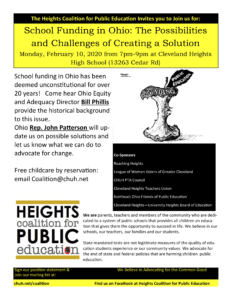

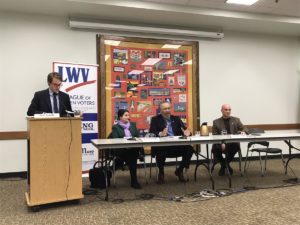
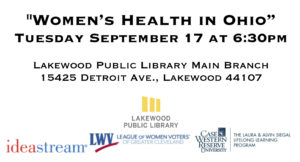
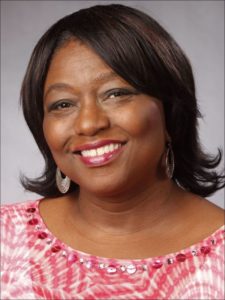
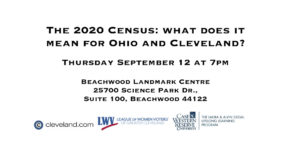
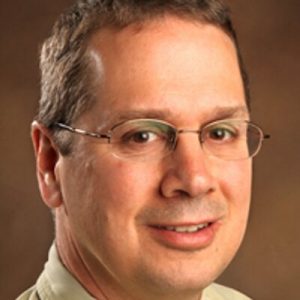
 Accurate census vital to Ohio’s future
Accurate census vital to Ohio’s future